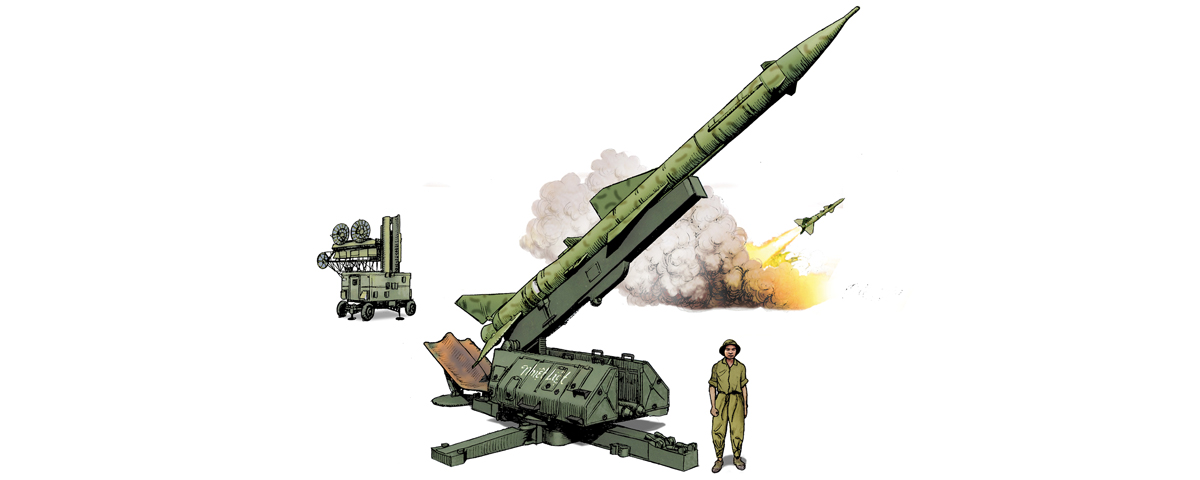A four plane flight of F-4C Phantoms providing combat escort to F-105D Thunderchiefs northwest of Hanoi on July 24, 1965, heard a SAM-launch warning. Seconds later, a Soviet-built SA-2a surface-to-air missile struck a Phantom crewed by Captains Roscoe H. Fobair and Richard P. Keirn, who ejected and were captured. (Keirn was later released; Fobair’s fate remains unknown.) The other F-4Cs were damaged but able to fly home. After months of building and linking more than 44 SAM sites and a related air-defense network, North Vietnam had launched its first guided missile against Operation Rolling Thunder. During those initial attacks American aviators lacked installed radar warning systems or countermeasures. Additionally, they were denied permission to strike the SAM sites under construction.
The SA-2 Guideline, the NATO designation for the Soviet Union’s S-74 Dvina missile, was rooted in concerns about American atomic bomber strikes in the USSR. Development of the SA-2 began in 1953. The designers decided on a radar-guided missile and adopted three radars already in development—a P-12 air-search radar, a PRV-10 height-finding radar and the RNSA-75 fire control radar. Early testing went well since the designers focused on achieving what they could with the available technology.
The first three-battery regiment stood up on Dec. 11, 1957. The early model’s inability to engage American U-2 flights led in 1959 to SA-2a with increased maximum range and engagement altitude. Ironically, a Chinese SA-2a garnered the missile’s first success, downing a Taiwanese RB-57D on Oct. 7, 1959. The now-famous Soviet downing of Francis Gary Powers’ U-2 om May 1, 1060, was the SA-2s second success.
The Guideline’s early victories in Vietnam hid its shortcomings (45 percent of launches failed). Meanwhile, U.S. forces developed specialized units, tactics and weapons, such as anti-radiation missiles and air-defense suppression aircraft. North Vietnam responded with random radar-activations, deception sites and alternating manual-to-automatic missile control.
By 1972 the united States had penetrated the missiles’ guidance system and, with the introduction of realistic rules of engagement, destroyed 68 of 95 SAM sites.
Although the SA-2 was responsible for less than 6 percent of U.S. aerial losses over North Vietnam, its impact on bombing missions has shaped American air-campaign planning, procedures, tactics and technology to this day. The missile is still used by more than a dozen former Soviet client states.
SA-2a Guideline (S-74 Dvina)
Length 35.1 ft.
Weight 5,040 lbs.
Launcher Single missile
Battery 6 launchers
Setup time 30 min.
Reload time 10-15 min.
Missile speed Mach 3.0
Max. range 16 nautical miles
Max. engagement ceiling 83,765 ft.[/box]
To see past Arsenals, click here.
Originally appeared in the Sept/Oct 2015 issue of Vietnam Magazine.





